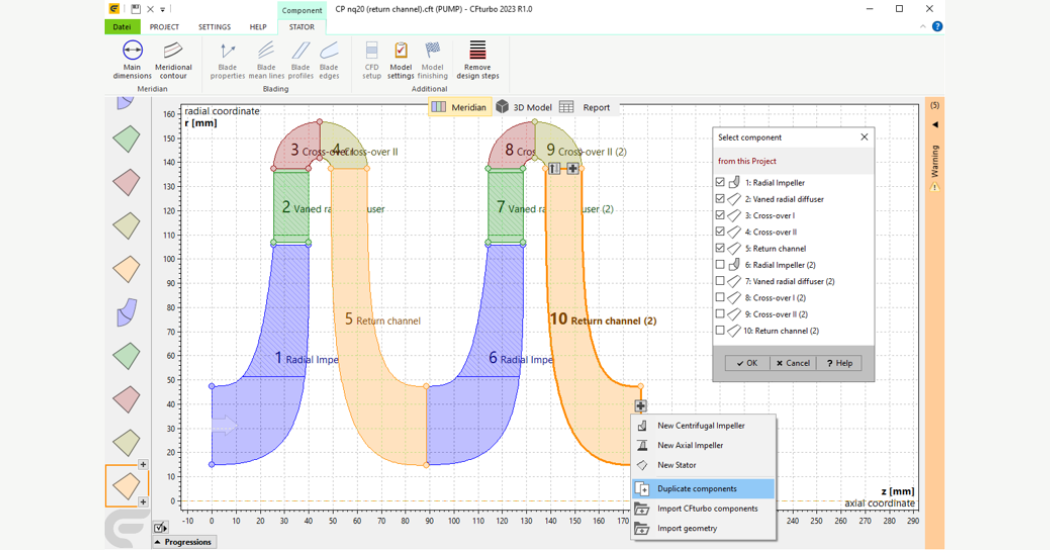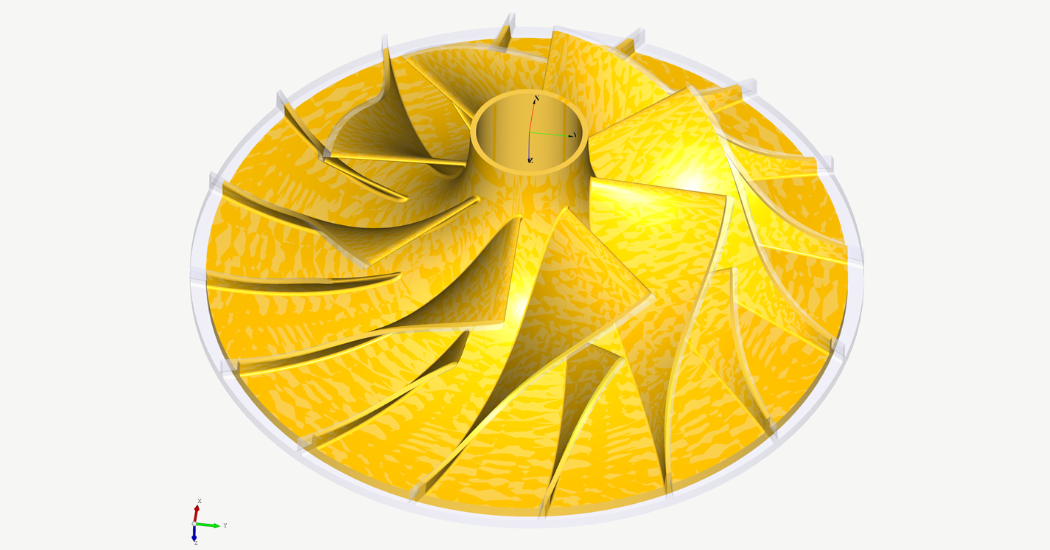Turbomachinery engineering company releases a new version of its user-friendly and powerful conceptual design software
CFturbo, Inc., an engineering company specializing in turbomachinery design software and services, announces the new release of their upgraded software, CFturbo 2023.R1. With this latest software release, the company has added a several new features to their proprietary software that will push the limits of conceptual design of pumps, blowers, fans, compressors, and turbines. Unlike any other turbomachinery design software on the market, CFturbo can be uniquely combined with different CAE-codes of third-party vendors like ANSYS, cadence, SIEMENS PLM, and SIMERICS, or open-source simulation and optimization software.
The new release features contain several substantial improvements to existing components. With this release, CFturbo enhanced again its unique Reverse Engineering (RE) of arbitrary-bladed Turbomachinery components like axial, mixed-flow and centrifugal rotors, or vaned stators. CFturbo 2023.R1 comes with the options for radial and meridional trimming of impellers, see images1. In addition, several new modeling details are added, new impeller main dimension calculations, flexible design options for the impeller solid domain and secondary flow path, a new volute loss coefficient and sizing parameter calculation, and the possibility to duplicate entire Turbomachinery stages, see image2. Furthermore, a direct interface to the Sim Scale platform was written to enable immediate access to web-based CFD- and FEA-simulations.

Image 2 Duplicate Turbomachinery Stages
About CFturbo: CFturbo is headquartered in Dresden, Germany, with another major office in Brooklyn, New York. Founded in 2008, CFturbo is an industry leader in turbomachinery design software. CFturbo software and Engineering services customers spanning various industries, including aerospace and defense, automotive, energy, oil & gas, HVAC, marine, process industry, appliances, and med-tech worldwide. Clients come from large corporations, small and midsize companies, start-ups, universities, and research organizations.




